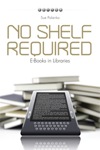
Yesterday I had the opportunity to speak with Ken Petri, the Director of the Web Accessibility Center at The Ohio State University, about the accessibility of eBooks and eBook readers. Ken is incredibly knowledgeable on the topic and offered a great deal of information during the interview. It’s about 25 minutes in length, so I strongly encourage you to download the file before listening due to it’s size. Ken provided us with a great list of resources for various aspects of eBook accessibility, which are below. Thanks Ken!
NSR offers monthly interviews with librarians, publishers, and others involved in the eBook industry. Have a listen from the interviews page.
- Read Rights Coalition article reporting NFB/AFB suit against ASU (June 2009)
- Settlement of ASU suit (January 2010)
- Announcement of DOJ settlement with Reed College, Pace, and Case Western (two other schools were also part of that DOJ action, Darden School at U. of Virginia and Princeton)
- Joint DOJ/DOE Dear Colleagues letter to university and college presidents, issued right after the 20th Anniversary of the ADA.
- EPUB 2.1 Charter. The IDPF, which now maintains the international standard for the EPUB format, is working to address many of the problems with the current EPUB specification, including rich accessibility and navigation and support for MathML.
- DAISY is the de facto accessible e-book standard. DAISY 3 and EPUB are supposed to “coincide” in EPUB 2.1, which ultimately means there will be an international standard e-book format that can be fully accessible.
- XPS is the favored format for K-NFB’s Blio Reader. XPS has a number of structural elements available in the specification, including sections, stories, paragraphs, lists, and tables. However, it is unclear how or if these structural elements will be made available to screen readers in future versions of Blio.
- PDF Accessibility from the PDF category on the Adobe Accessibility Blog: If readers are curious about the technical details for PDF accessibility, see the documents listed under the Slides from CSUN 2010 post. Screen readers can read accessible/”tagged” PDF. And if the PDF is well marked up, using headings and other structural elements, it is decently navigable by a screen reader. However, it is not in the same category of accessibility as DAISY. Currently, no screen reader is able to take full advantage of PDF document structure, though many do have basic abilities to navigate well-structured and tagged PDF.
- Finally, though we do not generally think of it as a book format, it should be noted that HTML is the most accessible document format available.
- Humanware Victor Reader Stream, one of the most popular screenless DAISY readers:
- gh, LLC ReadHear, a very high-quality, fully accessible DAISY and epub reader for the Mac. A PC version is forthcoming. ReadHear on the PC (which is a re-working of gh’s ghPlayer) will be one of two commercial DAISY readers that can read MathML.
- AMIS, a free DAISY reader from the DAISY Consortium.
- iBooks on iPad, iPhone, or iPod Touch is one of the more blind accessible e-reading platforms currently available. iBooks leverages the iOS VoiceOver screen reader to provide a simple and intuitive e-reading experience for blind readers. Bradley Hodges at AFB AccessWorld remarks on iBooks’ accessibility in his 24 hours with the iPad product review.
- Kindle 3 has enhanced accessibility, but as this thorough Kindle 3 review on the Serotalk blog testifies, the device still has some way to go before it is blind friendly or appropriate for mandated use in an educational context.
- Blio, by K-NFB Reading Technology, which makes a number of high-quality blindness products, was released at the end of September, 2010. Screen reader accessibility is promised for October 2010, but the software is currently not accessible to screen readers. Blio does, however, have ReadAloud, which provides highlighting as a book is read aloud by the software. Like Kindle, Blio only can read aloud books that are out of copyright or which the author or publisher has authorized to work with ReadAloud). Blio also has a feature called “ReadLogic,” which zooms portions of pages incrementally under user control and which could be helpful for readers with attention and other cognitive disabilities.
- VitalSource Bookshelf has recently shown significant promise as a textbook e-reading platform. Its screen reader accessibility currently (as of the 5.3.2 version) is decent and its keyboard accessibility is quite good.
- DAISY books: Bookshare and RFB&D are the two leading repositories in the U.S. Membership is limited to people with qualifying print disabilities. Membership for Bookshare is $50 annually and RFB&D is now free. Members have free access to books. It should be noted that those two organizations have around 60,000 books, which seems like a large number, until compared with Amazon’s Kindle book collection of 700,000 books.
- Reading Rights Coalition is actively trying to further accessible e-text through organizing and desemination of information. It is one of–if not the–best resources on the web for tracking e-reading law, activism, and software and hardware reader developments.


















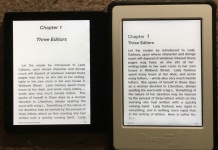
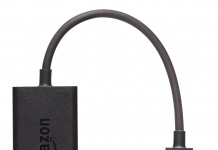

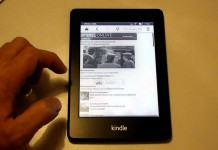
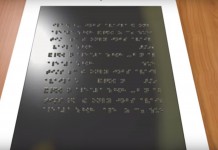











I in tanzania am blocked from buying e books from bookstores in the UK as well as from Amazon. I am prepared to pay legally with valid credit card
This forces one into more adventurous ways to get hold of e books at no charge.
This must be a dilemma for many people.
I agree with you 100% Dennis.
Glad I am not alone on this issue. Good luck. Lets hope that there will be changes in the near future.